How is a new pope chosen?
What is conclave and how is a Pope chosen?
- Published
The Pope is the leader of the Catholic Church, he is important because he guides millions of Catholics around the world in their faith.
Alongside the Bible, his teachings help shape the Church's beliefs and practices.
About half of all Christians worldwide, 1.4 billion people, are Roman Catholics and consider the Pope to be their leader, so the death of the Pope is a hugely significant moment.
The rituals for choosing a new pope date back centuries. So how does it work?
World leaders pay tribute after the death of Pope Francis
- Published21 April
What happens after a Pope dies?
Pope Francis
Immediately after a Pope dies, the Cardinals in the Vatican are informed, and a special official, called the Camerlengo, confirms and announces the Pope's death as Catholics around the world go into a period of mourning.
The Pope's Ring of the Fisherman - a special ring used by the Pope to sign and seal official documents - is destroyed.
A special ceremony is held where the ring is broken with a hammer to make sure it can no longer be used. This is part of a tradition that shows the Pope's reign has officially ended, and a new pope will soon be chosen.
What do the words 'sede vacante' and 'interregnum' mean?
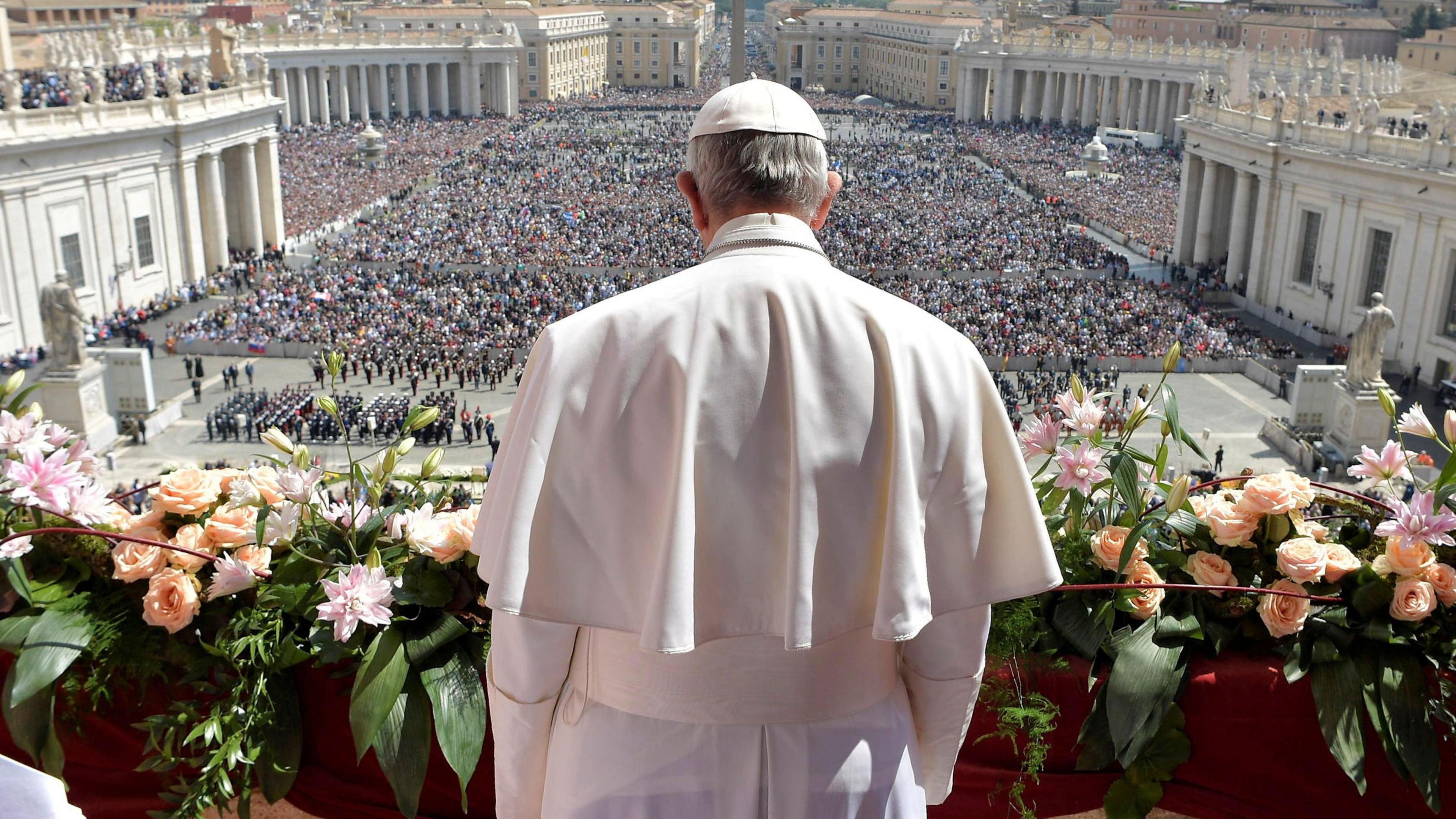
The period between the Pope's death and the election of a new pope, is called the interregnum.
Interregnum comes from Latin and means "between reigns".
Sede vacante is another Latin word that means "vacant seat". It means that there is currently no pope.
During this time, the Catholic church gets ready to choose a new pope and this period can last for several weeks.
The new pope is elected by the Catholic church's most senior priests, called cardinals.
Who can become Pope?
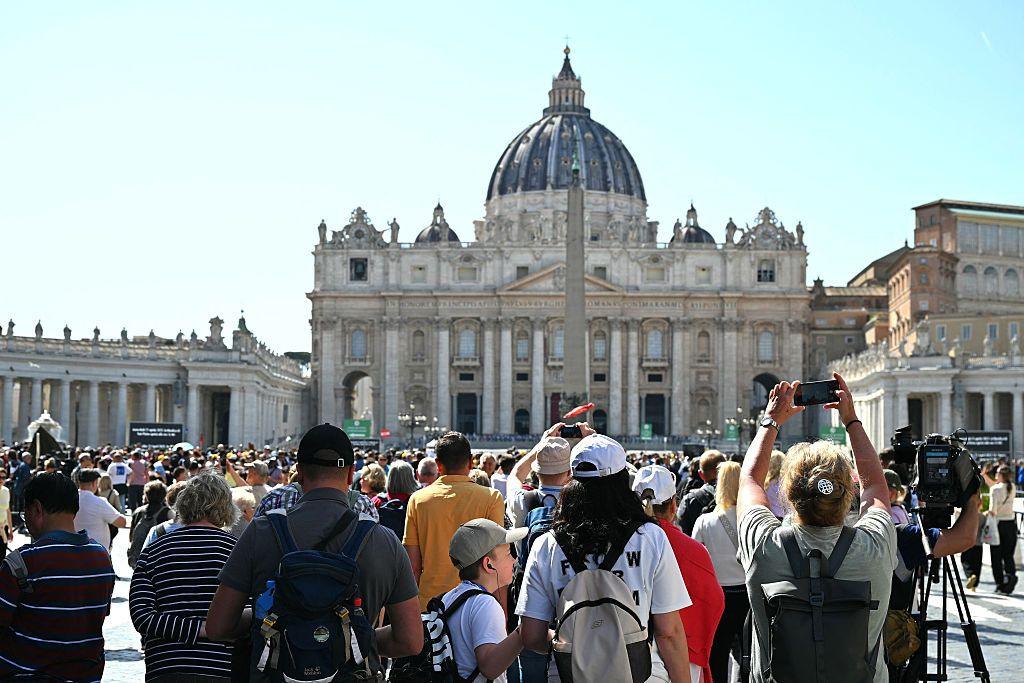
People gather near St Peter's Square, with St Peter's basilica in the background
Technically, anyone who is a man and a Catholic can be chosen to become pope.
In reality, the new Pope is almost always chosen from among the cardinals.
The cardinals are most senior Catholic leaders and are chosen by the Pope for their important roles. They are responsible for helping the Pope with decision-making.
How is the next Pope chosen?
Cardinals vote to choose a new pope.
There are currently 252 Catholic cardinals, but only 135 cardinals who are under the age of 80 are allowed to vote.
When the Pope dies, cardinals travel from all over the world to gather for a meeting that is known as the conclave where a new pope is chosen.
The conclave to elect a new pope typically begins between 15 to 20 days after the Pope's passing. Cardinals are expected to give an exact date after the funeral.
The vote takes place inside the Sistine Chapel, the famous hall in the Vatican, with walls and ceilings decorated with the art of Michelangelo.
The Vatican is the smallest independent state in the world, located within the city of Rome - it's roughly the size of a large park.
It is the home of the Pope and has its own government and laws.
What do Cardinals do inside the Sistine Chapel?
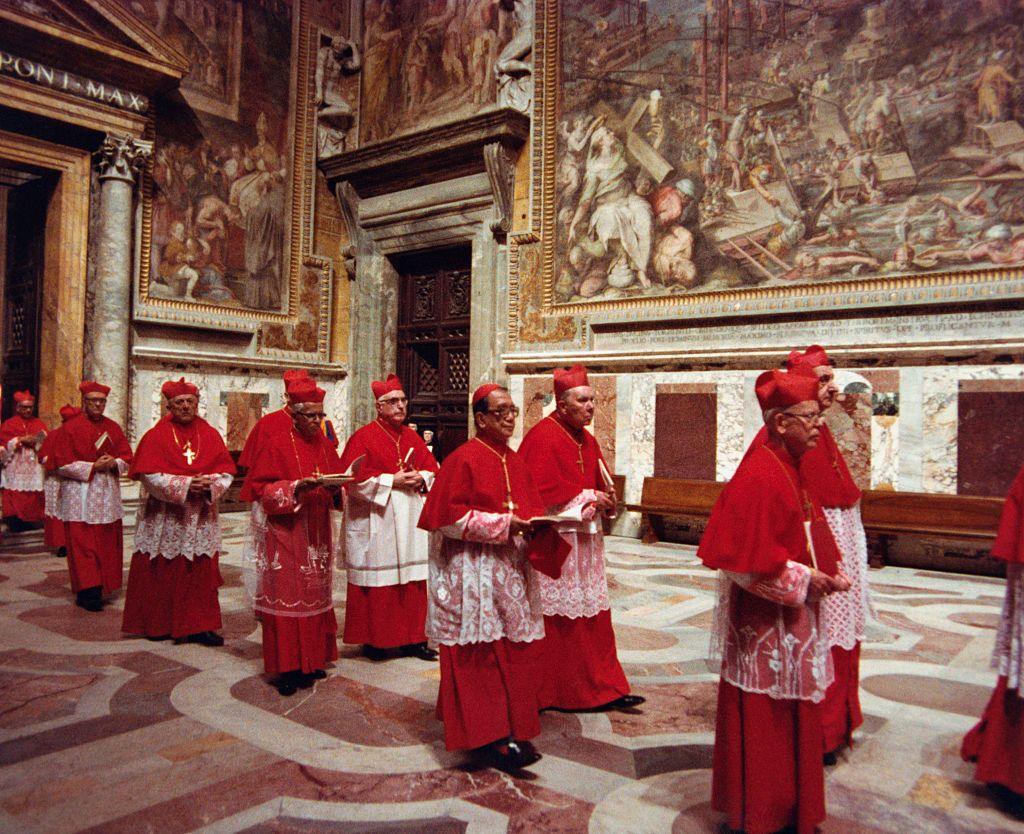
Cardinals Entering Sistine Chapel for Conclave
The main job of the cardinals during the conclave is to vote for the new pope.
During this period they do not leave the Vatican until a new pope has been chosen and are locked inside the Sistine Chapel while voting.
This is done to make sure they are not influenced by anyone outside, and to keep the election a secret.
While the conclave is ongoing, cardinals are not able to communicate with the outside world. No phones or internet is allowed.
To vote, they write down the name of a cardinal they think should be the next pope on a piece of paper - they do this secretively and place it in a box.
Voting continues until one cardinal gets enough votes (at least two-thirds of the votes) to be chosen.
While they are voting, the cardinals also spend time praying and reflecting on their decision.
The country with the most cardinals who can vote is Italy with 17, the US has 10 and Brazil has seven. The UK has three.
Why is there smoke, and what does it mean?
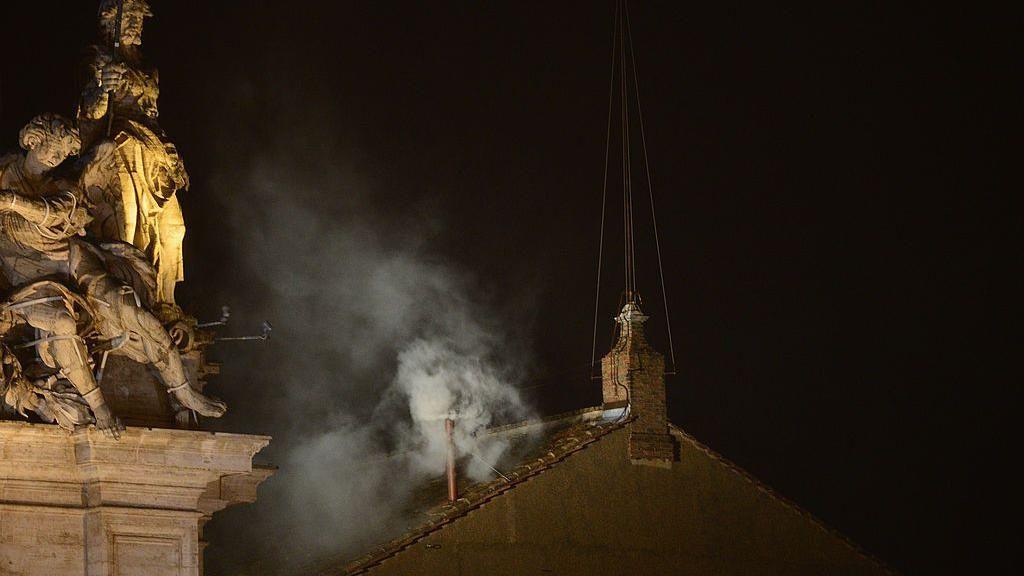
Members of the public are given clues to whether a decision has been made by the colour of the smoke which is released
After each round of voting, the votes are burned. The Sistine Chapel has a chimney on its roof and the smoke that comes from it during the burning is important:
Black smoke means no one has been chosen yet, so they keep voting.
White smoke means a new pope has been selected.
To colour the smoke white or black, it's mixed with different chemicals.
As the smoke is visible from the Sistine Chapel's copper chimney, it means millions of people watching all over world will know almost immediately if a decision has been made.
What happens after a new pope is chosen?
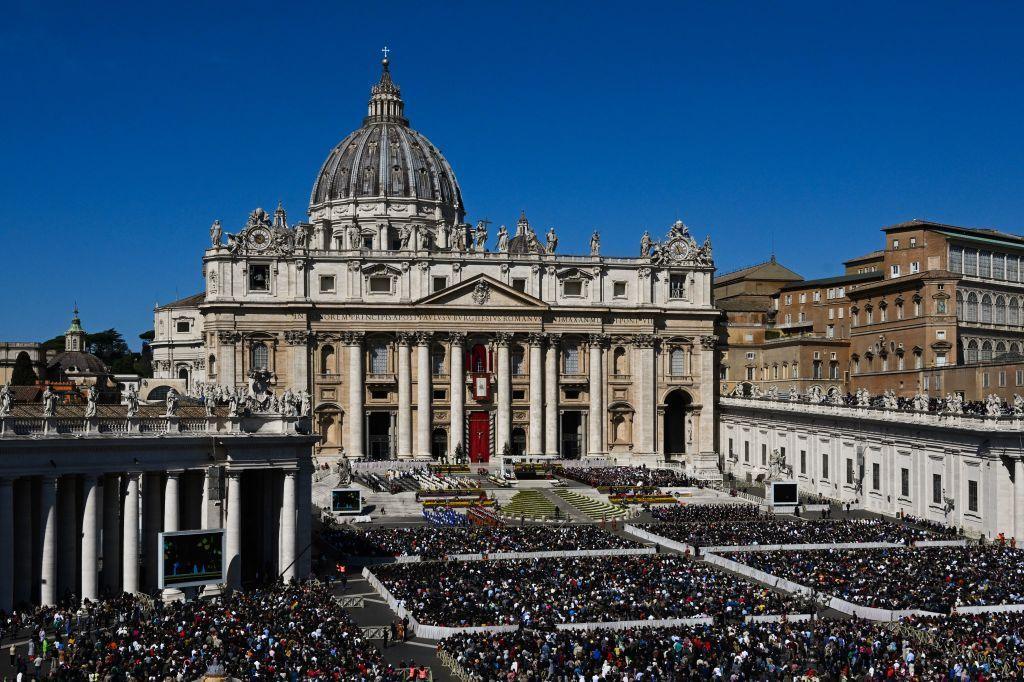
St Peter's Basilica in the Vatican
After a new pope is chosen, he is announced to the world with white smoke coming from the chimney of the Sistine Chapel, signalling that a decision has been made.
Shortly after being chosen, the new Pope will go into a small, private room in the Vatican known as the Room of Tears.
It is called the Room of Tears because it is the place where the new Pope has a quiet moment to reflect on the huge responsibility he has just taken on.
While there, he is also given his official clothes, including accessories like the white cassock, a cape called the mozzetta and a white skullcap called the zucchetto.
The new Pope then appears on the balcony of St. Peter's Basilica in Vatican City - the largest church in the world - to greet the crowd, give a blessing, and speak a few words.
When a pope is elected, he chooses a papal name as part of his new role.
He has the freedom to choose any name he wants, but many popes choose names with significance, such as a saint's name, the name of a previous Pope, or a name that has personal or religious meaning.
